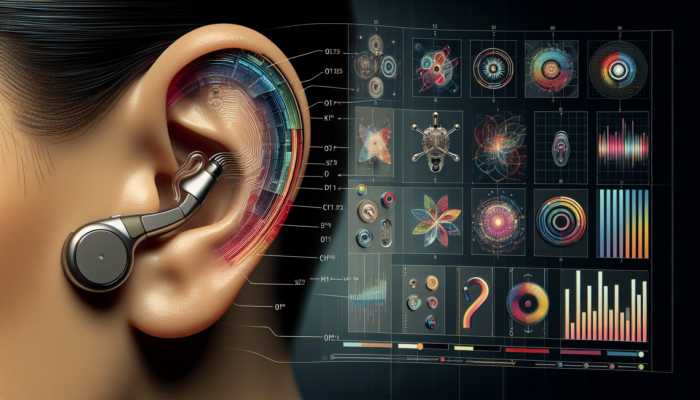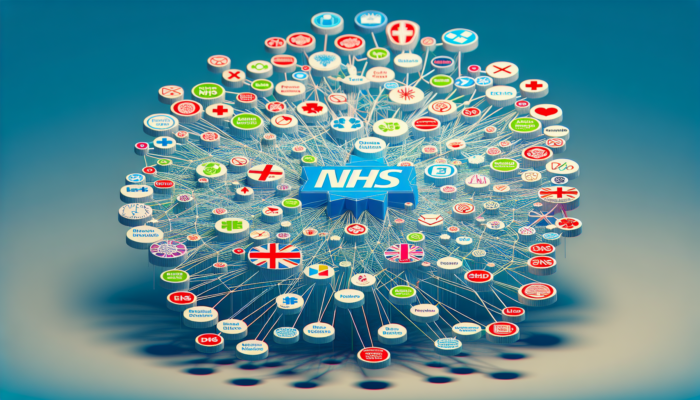Last Updated on 28/04/2025 by Admin
Effective Visual Inspection Techniques for Hearing Aids
Thoroughly Assess for Cracks in Your Hearing Aid
Every hearing aid integrates sophisticated technology and high-quality materials aimed at significantly enhancing the user’s auditory experience. An essential first step in identifying hearing aid wear and tear involves performing a comprehensive visual inspection. Start by meticulously checking the hearing aid’s outer casing for any visible cracks or fissures. While these imperfections may appear trivial at first glance, they can profoundly affect the device’s functionality. Cracks can serve as entry points for moisture and dirt, potentially leading to internal malfunctions or a noticeable decline in sound quality.
In regions characterized by high humidity or extreme temperature fluctuations, such as tropical areas or arid deserts, hearing aids become particularly susceptible to damage. High humidity can accelerate the corrosion of electronic components, while intense heat may warp plastic casings. It is imperative to conduct regular inspections, especially in these challenging environments, to ensure the longevity and reliability of your device. Upon discovering any cracks, it is advisable to consult your audiologist or hearing aid specialist without delay to explore repair or replacement options.
Additionally, make it a routine to inspect the surface for any scratches or scuffs. These signs of wear not only affect the device’s aesthetic appeal but could also signify that the hearing aid has endured impacts that might cause deeper internal damage. Always keep in mind that early detection is crucial in maintaining the optimal performance of your hearing aid.
Carefully Inspect the Eartip for Damage
The eartip is an essential component of any hearing aid, playing a pivotal role in effectively delivering sound into the ear canal. While exploring how to spot hearing aid wear and tear, it is crucial to inspect the eartip for any signs of damage or deterioration. Over time, eartips may become discolored, brittle, or deformed due to exposure to earwax, moisture, and various temperature fluctuations. Such degradation can significantly lead to decreased sound quality, discomfort, and even the potential risk of ear infections.
Cultural differences around the globe can influence how frequently individuals clean and maintain their hearing aids. In places where personal hygiene is highly emphasized, such as Japan, the maintenance of hearing aids—including eartips—might be executed with meticulous care. Conversely, users from regions with less stringent hygiene practices may overlook this critical detail, resulting in a rapid decline in the device’s functionality.
If you observe that the eartip no longer provides a snug fit or has developed cracks, it is time to consider a replacement. Numerous manufacturers offer various sizes and styles to accommodate diverse ear shapes and sizes. Regularly replacing eartips not only helps maintain sound quality but also promotes ear health, making it a straightforward yet vital preventive measure.
Thoroughly Examine the Battery Compartment for Issues
A fully functional battery compartment is critical for the seamless operation of a hearing aid. When investigating how to spot hearing aid wear and tear, pay close attention to the battery compartment. Look out for signs of corrosion, which often appears as a white, powdery residue around the battery terminals. Corrosion can hinder the battery from establishing a secure connection, potentially leading to inconsistent functionality or complete device failure.
Various regions exhibit differing humidity levels that can significantly influence battery performance. In humid locales, such as coastal cities, moisture can infiltrate the battery compartment, hastening corrosion. Regularly opening and closing the compartment can help ensure it remains functional; it should operate smoothly without any resistance. If you encounter difficulty, it may indicate internal damage or warped components that require immediate attention.
Furthermore, keep a close watch on battery life. If your hearing aid is consuming batteries at an unusual rate, this may signal underlying issues within the device itself. A professional check-up may be warranted to accurately diagnose any potential problems affecting battery performance. Taking proper care of the battery compartment is an essential aspect of hearing aid maintenance, significantly contributing to overall reliability.
Inspect the Microphone Port for Blockages
The microphone port of a hearing aid serves as its essential gateway to the world of sound. A critical step in understanding how to spot hearing aid wear and tear is to inspect this area for any blockages or debris. The microphone is designed to capture sound clearly; however, over time, it can become obstructed by earwax, dust, or moisture, leading to impaired sound reception and decreased performance.
Users in various geographical locations may encounter different levels of exposure to these obstructive elements. For instance, in urban environments with high pollution levels, hearing aids may accumulate dust much more quickly than in rural areas. It is essential to regularly check the microphone port and clean it as necessary using a soft brush or cloth, ensuring that no particles hinder sound quality and clarity.
Moreover, if you begin to notice diminished sound clarity or an increase in background noise, it may indicate a blockage within the microphone port. This obstruction could drastically affect the overall performance of your hearing aid. If cleaning does not resolve the issue, seeking professional assistance is highly advisable. Regular maintenance of the microphone port not only enhances the listening experience but also prolongs the functional lifespan of your hearing aid.
Comprehensive Sound Quality Assessment
Listen for Distortion in Audio Output
Sound quality is the lifeblood of any hearing aid, and evaluating it is crucial for anyone who wants to master how to spot hearing aid wear and tear. Start by testing the device for any distortion in audio output. If voices or music sound muffled or distorted, this could indicate internal damage or malfunctioning components. Distortion can arise from various issues, including blockages in the microphone or speaker systems.
For instance, in bustling environments like marketplaces in India or outdoor festivals in Brazil, the need for clarity in sound becomes paramount. Users may find their devices struggling to filter out unwanted background noise, leading to frustration and discomfort. Regularly assessing sound quality in various settings can help users identify when their hearing aids require professional servicing or adjustments.
If you consistently notice distortion, first ensure that the hearing aid is configured correctly for your specific listening environment. Many modern devices come equipped with multiple programs designed for various soundscapes, allowing users to select the optimal setting for their needs. However, if adjustments do not rectify the sound distortion, consulting a hearing care professional for a comprehensive evaluation may be necessary.
Maintain Consistent Volume Levels
Volume consistency plays a crucial role in ensuring an optimal hearing experience. As you delve into how to spot hearing aid wear and tear, ensure that the volume remains stable and adjust as necessary. If you find yourself frequently altering the volume settings, this may indicate underlying issues with the device. Ideally, hearing aids should maintain consistent volume levels across various environments; fluctuations might suggest a need for maintenance or recalibration.
Consider the influence of your surroundings when assessing volume levels. In quieter settings, such as libraries or tranquil parks, a properly functioning hearing aid should operate without excessive amplification. In contrast, in noisy atmospheres such as concerts or sporting events, the device should effectively enhance sound while minimizing overwhelming background noise. Striking the right balance is essential for a satisfying auditory experience.
Many modern hearing aids feature automatic volume adjustment capabilities, allowing them to adapt to changing sound environments. If you notice that this feature is malfunctioning, or if manual volume adjustments feel inconsistent, consulting a hearing care professional is advisable. They can evaluate the device’s processing capabilities and make the necessary adjustments to restore optimal function and sound quality.
Evaluate the Impact of Background Noise on Clarity
Background noise is a critical factor in the overall effectiveness of a hearing aid. When exploring how to spot hearing aid wear and tear, it is essential to listen for increased background noise. If you find that background sounds overpower conversations or music, this indicates that your hearing aid may require attention and adjustment.
The experience of excessive background noise can greatly vary across different global locations. For instance, amidst the vibrant streets of Bangkok or the busy thoroughfares of New York, users may find their devices struggling to isolate specific conversations. This challenge is particularly pronounced in older hearing aid models that lack advanced noise-cancellation technology. Regularly assessing how well your device filters out unwanted sounds is crucial for maintaining a pleasant auditory experience.
If background noise becomes increasingly prominent, it may signal that your hearing aid’s settings need adjustment or that the device is experiencing wear and tear. Many modern hearing aids come equipped with customizable features that allow users to enhance focus on specific sounds while minimizing background interference. If adjustments do not alleviate the problem, seeking guidance from an audiologist is advisable to ensure that your device is functioning as intended.
Comfort and Fit Evaluation for Hearing Aids
Assess for Any Ear Discomfort While Wearing
Comfort is often an overlooked aspect of hearing aid use, yet it plays an essential role in user satisfaction. When evaluating how to spot hearing aid wear and tear, assessing ear discomfort is vital. If a hearing aid causes pain or irritation, it may indicate an improper fit or the early onset of wear. This discomfort can detract from the overall experience, making users less likely to wear their devices consistently.
Various ear shapes and sizes across different cultures can lead to differing fit experiences. For example, individuals from certain regions may possess unique ear anatomies that necessitate custom-fitted devices. It is crucial to collaborate with a professional audiologist to ensure that your hearing aid is tailored to your specific ear shape, providing a snug yet comfortable fit for daily use.
If discomfort persists, examine whether the device has become loose due to wear or if components like eartips have degraded over time. Regularly checking for signs of wear helps you maintain comfort and effectiveness in your hearing aid use. Remember, prioritizing comfort is not merely about immediate relief; it also affects long-term hearing health and the frequency with which you use your device.
Thoroughly Check for Loose Parts
A well-maintained hearing aid should have all components securely attached, which is vital for its overall functionality. As you delve into how to spot hearing aid wear and tear, make it a regular practice to check for any loose parts. Loose components can lead to further damage, significantly impacting sound quality and user comfort.
The vibrant lifestyles of individuals in various regions can place additional stress on hearing aids. Those engaged in outdoor activities, such as hiking in the Swiss Alps or participating in beach sports in Australia, may inadvertently cause wear on their devices. Regular inspections for loose components, such as battery doors, eartips, or microphone covers, can help prevent more significant issues from arising down the line.
If any parts feel loose, it is advisable to consult a professional for repairs or replacements. Avoid attempting to forcefully reattach components yourself, as this could lead to further damage. Maintaining the integrity of your hearing aid through routine inspections is essential for ensuring its longevity and optimal performance.
Monitor for Ear Canal Irritation
Irritation in the ear canal is a common concern for hearing aid users and often indicates that the device may be past its prime. While assessing how to spot hearing aid wear and tear, it is essential to monitor for any signs of irritation. Discomfort, itching, or redness in the ear canal can suggest that the materials used in the hearing aid have degraded or that the fitting is no longer appropriate for your ear anatomy.
Different climates and cultural practices can influence how frequently users experience ear canal irritation. For instance, humid environments may exacerbate moisture-related problems, while dry conditions could lead to increased friction against the ear canal. Regular cleaning and maintenance can significantly alleviate these issues, promoting a healthier environment for your ears.
If you notice persistent irritation, it may be time to evaluate the materials used in your hearing aid. Users should consider options that utilize hypoallergenic materials to minimize irritation and discomfort. Consulting with your audiologist can provide valuable insights into potential solutions, ensuring that your hearing aid remains a comfortable and effective tool for enhancing your hearing experience.
Evaluating Performance and Functionality of Hearing Aids
Test the Functionality of Program Switching
The ability to switch between programs is an essential feature of modern hearing aids, allowing users to adapt effectively to different listening environments. When exploring how to spot hearing aid wear and tear, testing program switching can reveal crucial information about your device’s functionality. If transitions between programs are sluggish or unresponsive, this may indicate internal issues that require immediate attention.
For individuals residing in diverse environments—such as urban centers filled with noise or quiet rural areas—the need for adaptable settings is paramount. Many devices come equipped with various programs tailored for specific environments, like “noisy” settings for bustling cities or “calm” for serene spaces. If you find that your hearing aid is not switching between these settings as intended, it is vital to seek a professional evaluation.
Regularly testing program switching not only ensures that you are maximizing the potential of your device but also enhances your ability to engage in conversations and activities across various settings. If you notice any difficulties, consult your audiologist to check for firmware updates or internal malfunctions affecting the program-switching functionality.
Address Feedback Issues Promptly
Feedback issues, often manifesting as irritating whistling or buzzing sounds, can severely diminish the hearing experience. Understanding how to spot hearing aid wear and tear involves monitoring for feedback that may signal a need for adjustments. Feedback can arise from several factors, including loose fittings, damaged components, or improper adjustments made to the device.
When utilizing hearing aids in busy environments, such as cafes in Paris or public transport in New York City, feedback can become a significant source of frustration. Regularly assess whether feedback occurs during specific activities or in particular environments, as this can help identify underlying problems. If feedback becomes a persistent issue, reevaluating the fit of the device or seeking professional assistance may be necessary.
Modern hearing aids often come equipped with features designed to minimize feedback, but these technologies can degrade over time. Regular maintenance and professional check-ups are recommended to ensure that feedback issues are addressed promptly, allowing you to enjoy clear sound without disruptions.
Evaluate Battery Life for Optimal Performance
Battery life serves as a crucial indicator of your hearing aid’s overall health. Close monitoring is essential in understanding how to spot hearing aid wear and tear. If you find that the battery life is shorter than expected, it could signal underlying issues within the device. Conducting regular battery checks and monitoring usage patterns can reveal critical insights regarding your hearing aid’s functionality.
Different regions may experience variations in battery performance due to climate. For example, extreme cold can drain batteries faster, while humid conditions might lead to corrosion that affects battery life. If you observe a significant drop in battery longevity, consider the environmental factors at play and consult your audiologist for advice on optimal battery choices tailored to your situation.
In some instances, rapid battery depletion can indicate internal problems with the hearing aid. If this occurs, it is advisable to seek professional evaluation. Audiologists can provide guidance on whether it’s a matter of simple adjustments or if more significant repairs are necessary. Understanding the nuances of battery life is integral to maximizing the performance and reliability of your hearing aid.
Assess the Processing Speed of Your Hearing Aid
The processing speed of a hearing aid can significantly influence its performance, particularly in rapid environments where sound clarity is essential. Evaluating processing speed is a critical component of understanding how to spot hearing aid wear and tear. If you notice that the device struggles to keep pace with rapid speech or quick changes in sound, it may indicate underlying issues that need addressing.
In multicultural settings, where conversations may fluctuate between various languages or dialects, the need for fast processing becomes vital. If the hearing aid cannot effectively process these changes, it may result in missed information or confusion. Regularly assess how well your device performs in different listening contexts to ensure it meets your auditory needs effectively.
If you suspect that the processing speed is subpar, consult your audiologist for a thorough evaluation. They can assess whether the device requires updates or repairs. Maintaining a hearing aid’s processing capabilities is crucial for ensuring optimal performance, particularly in diverse listening environments around the globe.
Verify the Stability of Connectivity Features
Modern hearing aids frequently come equipped with Bluetooth capabilities, enabling users to connect seamlessly to smartphones, televisions, and other devices. Verifying connectivity stability is an essential aspect of understanding how to spot hearing aid wear and tear. If you experience frequent dropouts or inconsistencies in connectivity, it may indicate wear or damage to the internal wiring.
Connectivity issues can vary by geographical location. For example, urban areas filled with numerous devices competing for bandwidth may present challenges, while rural areas might offer more stable connections. Regularly testing connectivity across different devices can help you identify any recurring issues that need addressing.
If you notice an unstable connection, check for updates or settings that may need adjusting. It’s also advisable to consult with your audiologist to explore potential issues affecting connectivity. Maintaining stable connectivity ensures that you can fully utilize the features of your hearing aid, enriching your overall auditory experience and satisfaction.
Essential Maintenance and Cleaning Practices
Clean the Microphone Ports Regularly
The microphone ports of a hearing aid are integral to its performance and sound quality. Regular cleaning is essential for maintaining optimal functionality and understanding how to spot hearing aid wear and tear. Over time, earwax and debris can accumulate, leading to blockages that impair sound reception. Consistent cleaning should be a fundamental aspect of your hearing aid maintenance routine.
In many cultures, personal hygiene practices greatly influence how frequently individuals clean their hearing aids. Some regions emphasize meticulous care, while others may overlook this critical task. Regardless of cultural practices, regular maintenance is crucial for all users. Utilize a soft brush or cloth specifically designed for hearing aids to gently clean the microphone ports, ensuring they remain unobstructed and functional.
For those living in areas with high levels of dust or pollution, cleaning may need to be more frequent to maintain sound quality. Regular inspections and cleaning of the microphone ports can significantly enhance the auditory experience, allowing users to enjoy clearer sound. If persistent issues arise even after cleaning, a professional evaluation may be necessary to address deeper concerns affecting the device’s performance.
Utilize Proper Cleaning Tools for Effective Maintenance
Using the appropriate cleaning tools is paramount in preserving the integrity of your hearing aid. When exploring how to spot hearing aid wear and tear, ensure you are equipped with the right tools to avoid causing damage. Many manufacturers provide cleaning kits specifically designed for their devices, which should be used regularly to maintain performance and functionality.
Improper cleaning techniques can lead to scratches, debris buildup, or even cause irreparable damage to the device. For instance, utilizing harsh chemicals or abrasive materials can negatively affect the delicate components of a hearing aid. In different regions, access to proper cleaning tools may vary, making it essential to ensure you have the correct items at your disposal.
If you are uncertain about which tools to use or how to clean your device effectively, consulting your audiologist for guidance is advisable. They can provide insights on best practices and recommended products, ensuring your hearing aid remains in optimal condition. Proper cleaning contributes to both the longevity of your device and the overall quality of your listening experience.
Adhere to Manufacturer Guidelines for Maintenance
Following the manufacturer’s cleaning and maintenance guidelines is critical for ensuring optimal performance and longevity. Understanding how to spot hearing aid wear and tear involves recognizing the importance of these instructions. Manufacturers provide specific recommendations tailored to their devices, and adhering to these guidelines can prevent unnecessary wear and extend the life of your hearing aid significantly.
Different hearing aids may require various care methods depending on the materials and technologies employed. In regions where hearing aids are subjected to environmental challenges, such as humidity or temperature fluctuations, strict adherence to these guidelines becomes even more crucial.
If you encounter any issues or have questions about maintenance, refer to the manufacturer’s documentation or consult with your audiologist. Regularly following these guidelines not only enhances the functionality of your hearing aid but also ensures that you enjoy the best auditory experience possible, regardless of your geographical location or circumstances.
Identifying When to Seek Professional Assistance
Recognizing Persistent Issues That Need Attention
Understanding when to seek professional help is essential for maintaining the functionality and performance of your hearing aid. If you experience ongoing problems despite regular maintenance and care, it’s a clear indication that further intervention is necessary. Recognizing these signs is crucial for ensuring that your hearing aid remains an effective tool for enhancing your auditory experience.
Users around the world may encounter unique challenges based on their environments and access to services. For instance, individuals in remote areas may find it more difficult to access professional services, leading to delays in addressing issues. However, regular evaluations are vital, especially if you notice significant changes in sound quality, comfort, or overall performance.
If you have cleaned the device, checked for loose parts, and adjusted settings without improvement, it’s time to consult an audiologist. They can provide a comprehensive evaluation, recommend necessary repairs, or suggest upgrades that will enhance your hearing experience. Don’t hesitate to seek help; proactive measures can prevent further damage and ensure that your hearing aid continues to serve you well.
Understanding Warranty and Service Options
Before seeking repairs or replacements, it is important to check whether your hearing aid is still under warranty. Many manufacturers offer warranties that cover defects and malfunctions for a specified period. Understanding the terms of your warranty can save you time and money when addressing issues and is a critical aspect of understanding how to spot hearing aid wear and tear.
In regions with varying service availability, knowing your warranty options is invaluable. For example, users in metropolitan areas may have greater access to authorized service centers compared to those in rural regions. If your device is still covered, this can expedite the repair process, ensuring your hearing aid is restored to optimal performance quickly and efficiently.
If your hearing aid is out of warranty, consulting your audiologist for repair estimates and options is a wise decision. They can guide you through the process of getting your device serviced or exploring possible replacement options. Being informed about warranty and service options equips you to manage your hearing aid effectively, ensuring it meets your needs over time.
Importance of Regular Check-ups for Hearing Aids
Scheduling regular professional check-ups is vital for maintaining your hearing aid in good condition. While personal inspections and maintenance are integral, professional evaluations can provide insights that self-checks may overlook. Understanding how to spot hearing aid wear and tear involves recognizing the importance of these check-ups for long-term auditory health and device functionality.
The frequency of check-ups may vary based on individual usage, environmental factors, and specific needs. Users in active or challenging environments may benefit from more frequent evaluations. Regular assessments allow audiologists to catch potential issues before they escalate, ensuring that your hearing aid continues to meet your needs effectively and efficiently.
Check-ups also provide opportunities to update software, recalibrate settings, and replace worn components. If you haven’t visited your audiologist in a while, consider scheduling an appointment to ensure your hearing aid remains a reliable tool for enhancing your quality of life and auditory experience.
Frequently Asked Questions About Hearing Aids
What are the Signs Indicating Hearing Aid Wear and Tear?
Signs of wear and tear include visible cracks, changes in sound quality, discomfort during use, and inconsistent battery life. Regular inspections and evaluations can help identify these issues early on, enabling timely interventions.
How Often Should I Clean My Hearing Aid?
It is recommended to clean your hearing aid daily, particularly the microphone ports. Regular maintenance helps prevent issues and prolongs the lifespan of the device, ensuring it functions optimally.
When Should I Consider Replacing My Hearing Aid?
Consider replacement if the device frequently malfunctions, if you experience persistent discomfort, or if it fails to meet your auditory needs even after repairs and adjustments.
Can I Perform Basic Maintenance on My Own?
Yes, basic maintenance tasks such as cleaning and battery replacements can be handled independently. For more complex issues or repairs, consulting a professional is advised.
How Does the Environment Impact My Hearing Aid?
Environmental factors such as humidity, temperature, and dust can significantly affect the performance and longevity of your hearing aid. Regular checks and maintenance are crucial, especially in challenging environments.
What Materials Are Best for Eartips?
Hypoallergenic materials are ideal for eartips to minimize irritation. Consult with your audiologist for recommendations that suit your unique needs and preferences.
How Can I Enhance Sound Quality with My Hearing Aid?
Regular cleaning, ensuring proper fitting, and consulting an audiologist for necessary adjustments can significantly enhance sound quality and overall user satisfaction.
Are There Warranties Available for Hearing Aids?
Yes, most manufacturers provide warranties for hearing aids, covering defects and certain types of repairs. Always check the warranty terms when considering repairs or replacements to protect your investment.
What Should I Do If My Hearing Aid Is Whistling?
Feedback issues, often characterized by whistling sounds, can typically be resolved by adjusting the fit or checking for blockages. If problems persist, consulting your audiologist for a thorough evaluation is recommended.
How Often Should I Visit My Audiologist for Check-ups?
Regular visits to your audiologist are recommended at least once a year. However, individuals with active lifestyles or ongoing issues may benefit from more frequent appointments to ensure optimal hearing aid performance.
Explore our journey on X!
The post Spotting Hearing Aid Wear and Tear: Key Tips You Need appeared first on The Microsuction Ear Wax Removal Network.

























